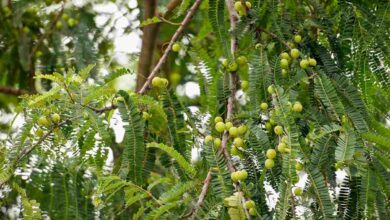Tomato cultivation: Follow these tips for tomato cultivation, there will be tremendous yield
Tomato cultivation: Tomato bumper production is anticipated in Rajasthan’s Sirohi district’s Mandar, Revdar, and Aburoad sectors. At the moment, the farmers are irrigating the crop. The cooked tomatoes are then sent to Gujarat, Jodhpur, Sumerpur, and other states. The Agriculture Department reports that 4293 hectares of land in the district are used for the cultivation of creeper vegetables, ladyfinger, tomatoes, and chillies.

A tomato may be grown in a variety of soil types. Red and black soil, clay, and sandy loam are thought to be appropriate for this. This season, Mohanlal Parmar, a farmer in Kharat village in the district who grows fennel, has grown tomatoes. The farmer informed the reporters that they could either prepare their own tomato seedlings or purchase pre-made ones.
The greatest approach for growing tomatoes is mulching.
Plastic should be used either before or after seeding while growing tomatoes. Plants should then be placed inside of it from above. This method is known as mulching. As a result, the earth stays cold and tomato plants need less water. The plants are not surrounded by weeds. This method accelerates the growth of tomato plants. According to the farmer, one should consider the space between tomato plants before planting them. Plants must be spaced one foot apart in a row and four feet apart in two rows. This promotes healthy plant growth.
Sticks are used to help grow plants.
According to farmer Mohanlal Parmar, in tomato cultivation, the plant is supported by sticks, and the tomato’s weight is secured with wire to a thread. Tie it to keep the plant secure since as tomatoes arrive, their weight rises. He said that by constructing a drip irrigation system, tomatoes are receiving both water and insecticides. About one and a half bigha are planted with tomatoes. At a time, three to four quintals of tomatoes emerge. In the market, tomatoes cost between 25 and 30 rupees per kilogram.





